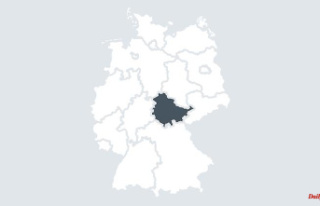Stuttgart/Berlin (dpa/lsw) - The corona pandemic with all its consequences has further aggravated the situation for poorer people and the risk of poverty from the point of view of the Paritätischer Wohlfahrtsverband in Baden-Württemberg last year. The proportion of people living in relative poverty in the southwest, the so-called poverty rate, reached 13.9 percent in the second year of the pandemic, the highest level in years, as the state chairman of the parity, Ursel Wolfgramm, said on Wednesday. Compared to the previous year, it had increased by 6.1 percent, and more than 1.5 million people in the country were now affected.
However, Baden-Württemberg remains at a lower level in a nationwide comparison, as can be seen from the poverty report published in Berlin by the Paritätisches Gesamtverband. Nationwide, the rate is 16.6 percent.
The Baden-Württemberg state government must work at the federal level for higher standard rates in basic security, said Wolfgramm. The housing benefit, BAföG for students and additional income opportunities for people with basic security must also be improved. "This dramatic increase in poverty must be stopped now," demanded Wolfgramm. In the current year, rising inflation and skyrocketing energy prices continue to hit basic earners and people on unemployment benefit II, colloquially also known as Hartz IV, hard. Uncomplicated and very effective are free communal catering in child day care and at schools and the partly free bus and train journeys for people with basic security.
The report is based on figures from the Federal Statistical Office. In wealthy countries like Germany, poverty is not defined in terms of direct hardship such as hunger or homelessness. The focus is rather on the question of whether the household income is sufficient for social participation. The at-risk-of-poverty rate indicates the proportion of the population that has to get by on less than 60 percent of the median income.












